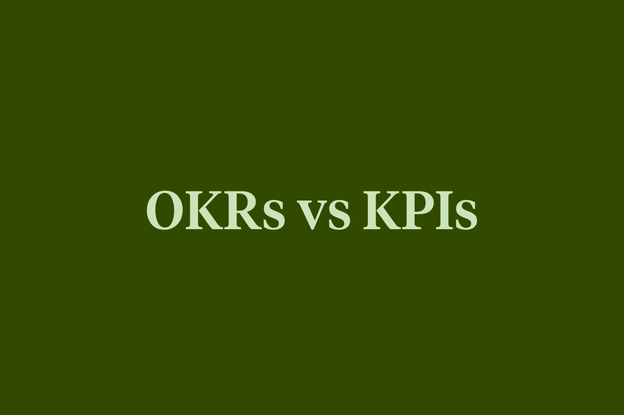Employee pulse survey best practices

Gathering employee feedback is the first step towards making more informed decisions that affect your people. Employees can more easily contribute to shaping workplace culture when there is an outlet for their thoughts and opinions, such as through an engagement survey.
However, once organizations begin running engagement surveys, it can be alluring to survey continuously. Monthly or weekly employee surveys are commonly referred to as pulse surveys. Pulse surveys may be growing in popularity, but are they really the best solution for your workplace?
Culture Amp’s Chief Scientist, Dr. Jason McPherson, explains why continuous surveying isn’t the best solution for work. He says, “Based on what we’ve seen, 90% of companies using continuous surveys can’t keep their response rates above 50% when the same people are being surveyed weekly or monthly.”
Rather than continuously surveying, pulse surveys should be used as a strategic complement to a main employee engagement survey. Pulse surveys are most effective when they are used to track progress on your engagement survey initiatives.
Below, we'll explore what goes into creating an effective pulse survey, an effective overall survey cadence, and how to communicate the purpose of each survey with employees.
Creating an effective pulse survey
Each employee survey should have a clear purpose, including your pulse survey. Pulse surveys are usually shorter (e.g., 5-15 questions). Generally, the purpose of an employee pulse survey is to:
- Track engagement levels and drivers of engagement
- Understand if action plans are working so you can make modifications quickly
- Demonstrate that employee feedback is important to the organization
By including core engagement questions in your pulse surveys, you can track engagement levels and understand what's driving engagement over time.
Use action-oriented questions to understand if employees see action being taken due to their previous participation in a survey. For example, you can gather agreement levels to the question, "I have seen positive changes take place based on our previous survey results."
Formatting a pulse survey in this way provides a reliable and repeated measure for seeing overall trends in engagement and understanding action planning.
Tip: Survey only as fast as you can act
Although it can be tempting to try to conduct a pulse survey every month or week, proceed with caution and intention. After all, it's the lack of action that causes survey fatigue. As Culture Amp CEO Didier Elzinga says, “The most typical reason people don’t want to fill out your survey is that you haven’t done anything since the last one. They don’t have survey fatigue; they have lack-of-action fatigue.”
The rule of thumb to combat this fatigue? Only survey as often as you can take valuable action on the results.
Planning pulse surveys into your engagement survey cadence
Measuring employee engagement is important, and so is deciding upon the best survey cadence for your organization. A customized approach based on the needs and capabilities of an organization is the best cadence; there isn’t a one-size-fits-all solution.
An annual engagement survey gives you a starting point for all surveys that follow. Many organizations find that surveying once per quarter gives them enough time to take action on survey results.
Quarter One: Baseline Engagement Survey
The engagement survey in the first quarter will serve as the baseline for that year. You’ll be able to identify what is driving employee engagement and start action planning based on employee feedback.
Generally, a baseline engagement survey is about 50 questions and should take people less than 10 minutes to complete.
Quarter Two: Pulse Survey
A pulse survey allows you to track progress on an area of focus from your baseline. The pulse survey is much shorter than a full engagement survey, typically 10-15 questions, and takes under five minutes to complete.
The pulse survey in Q2 should include core engagement questions to help you understand if you’re moving the needle on a particular issue. This pulse survey is also useful in reminding employees of what actions are being taken.
Quarter Three: Deep Dive Survey
A deep dive survey helps you diagnose an important topic that would be too difficult to get a full understanding of in your baseline survey. Topics include company values, individual effectiveness, benefits, wellbeing, manager effectiveness, team effectiveness, and inclusion.
Quarter Four: Pulse Survey
Generally, the Q4 pulse survey is another follow-up on a specific area while still including core engagement questions. Including a few questions based on results from your Q3 deep dive survey will give you feedback on the impact of those initiatives so far.
Communicating the purpose of each survey
Communication is an important first step in getting people to participate in any engagement survey. When employees know why a survey is taking place, when and where to take it, and how the results will be used, they are more inclined to provide feedback. That's why it's so important to communicate properly before, during, and after each survey.
Using employee engagement pulse surveys effectively is also essential to maintaining a flow of feedback in the workplace. Ensuring that there is enough time between each survey to take action on results helps combat fatigue that can occur with a continuous survey cadence.

Understand your employees
Make better decisions and drive meaningful change by understanding your people.






